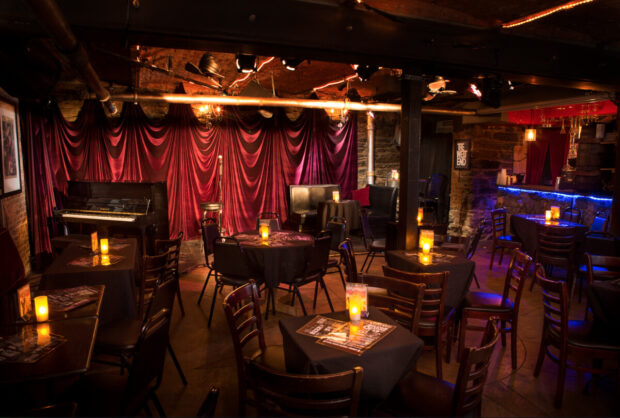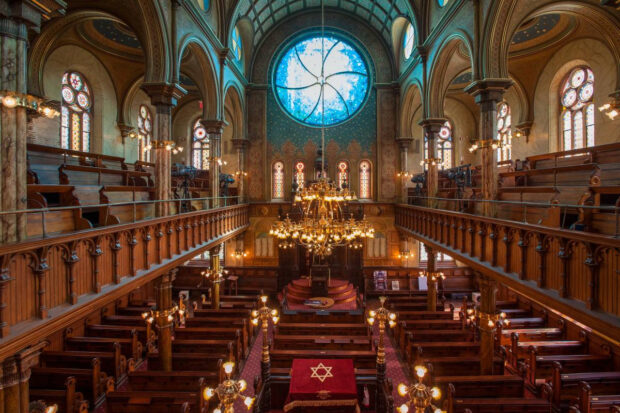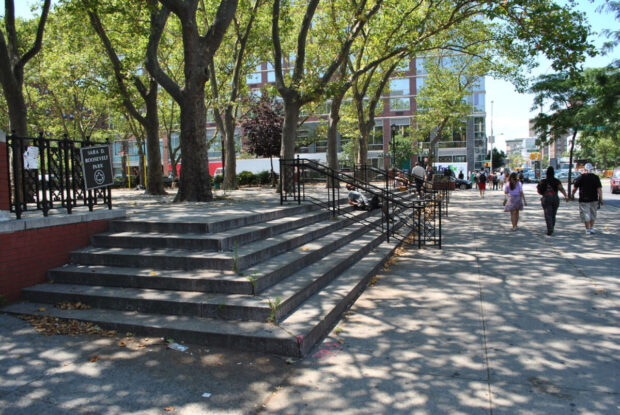The Lower East Side is very popular among tourists, but in addition to its famous attractions, the area also holds many secrets that are rarely accessible to tourists. Today we’re going to tell you about seven of them.
Since the late 19th century, the Lower East Side has been inhabited alternately by all kinds of diasporas – Germans, Italians, French, and other Europeans. Today, Chinese who migrate from neighboring Chinatown are the dominant immigrant group in the area.
READ 10 Weirdest Things That Can Only Be Bought in New York
In the early 2000s, the Lower East Side underwent a period of rapid reconstruction, making it one of the most fashionable areas of Manhattan. There are alleyways and apartment buildings adjacent to luxury boutiques, modern restaurants, and fashionable music and art establishments. All of this makes up an eclectic, bizarre, and diverse “fabric” of the Lower East Side. So, here are our seven secrets of the fashionable neighborhood.

Image result for backroom bar new york the Back Room, located at 102 Norfolk Street, is one of the most famous speakeasies of New York City. In fact, it is one of the two remaining bars in New York that operated during Prohibition.
It’s a secret place where visitors can order alcohol in teacups. The room is decorated in the style of the 1920s, with furniture and decoration elements, as if transferred from the Great Gatsby era.
In the mid-to-late 19th century, public health and sanitation in New York City became a growing concern. By that time, the city’s growing population had reached 1.4 million citizens. It was leaving many people without access to adequate sanitation, such as toilets and bathrooms. To combat this problem, public baths were built around New York City.
READ Cameron Crews and Her Must Read Poetry Book “To The Monsters of My Past”
The Allen Street Bathhouse was the last public bathhouse to close during the New York City financial crisis of the 1970s. Today, this is the Church of the Grace of Fujiang, a Chinese congregation on the Lower East Side. However, the complex facade of the building, which includes an ornament of water theme, remains intact.

Eldridge Street Synagogue on the Lower East Side is one of two synagogues recognized as New York City’s national historical landmark.
It was built in the 19th century during the influx of East European Jewish immigrants. The main sanctuary of the synagogue was abandoned and reopened only in the 1970s. Since then, the temple has been restored and now serves as an educational center that provides paid tours.
It is one of the first synagogues erected in the United States by East European Jews. Although the original building was built in ten months, the restoration took twenty years and cost $18.5 million. Many of the intricate details of the building are actually skillful forgeries (for example, the walls and columns of the synagogue may appear to be made of marble, but they are actually painted).
The recording studio «Iron and Velvet» by producer J. Ralph is located on Clinton Street, 80, in a building formerly called Clinton Star Theater. It was built in 1914 and served as a variety house until closing in 1950. The variety show featured stars such as Charlie Chaplin. It is one of the oldest vaudeville theatres in the history of New York City.
Today, J. Ralph’s, which is also a super-exclusive nightclub, is one of the last great recording spaces left in the United States. It is only available by appointment, and guests must enter through the entrance of the apartment building at 80 Clinton and then pass through a fancy decorated door.
Clemente Soto Velez building, which now houses the cultural center of Clemente Soto Velez, has a long history. It used to be a school that closed in the 1970s due to a fire. The house became a home for drug addicts until it was cleaned up and turned into a community center for Hispanic-speaking immigrants.
READ Hudson Yards: What’s Going to be Built in the New Neighborhood of New York
Today the Clemente administration offers long-term studio space for art and other art classes. In particular, Clemente once hosted classes and events for students of the Academy of Pagan Studies of the Wiccan Family Temple, the first school of magic in New York City. According to local legend, the center is also a haven for urban ghosts. They say that the five-story structure is crawling with perfume, including a little girl wearing clothes from the early 20th century.

The history of Sara Delano Roosevelt park began in 1929. New York City purchased land on the Lower East Side to expand Christy and Forsythe Streets and build low-cost housing.
However, this plan was never implemented, and in 1934 Sarah Delano Roosevelt Park (named in honor of Franklin’s mother Delano Roosevelt) was built on the site.
There is a M’Finda Kalunga garden in the park, named after an African-American cemetery near the park. Earth served as the second African-American cemetery in the city between 1794 and 1853 before the remains were dug up and sent to Cypress Hills Cemetery in Brooklyn.

This information and can hardly be attributed to «secrets», still worth telling about this cafe. If you are a cat lover, go to Koneko (located on 26 Clinton Street), the first Japanese cat café in New York City. This cafe is modeled after the extremely popular Japanese pet shops where you can sit and drink sake with a cat on your lap.
The café was founded by Benjamin Kalb, a chef and classical pianist who inspired the idea after a trip to Japan. The modern cafe decor, developed by Co-American, includes cartoon graffiti with cats and comfortable chairs for people and cats.
The café has three different sections, including an attic called «Upper Nursery», a small lounge known as «Lower Nursery», and an outdoor courtyard, which is aptly called Catio. The Koneko restaurant serves Japanese cuisine, wine juices, and sake. An hour spent in a café with twenty cats costs fifteen dollars, and part of that money goes to Anjellicle, whose mission is to rescue cats from New York shelters.
Like us on Facebook for more stories like this: